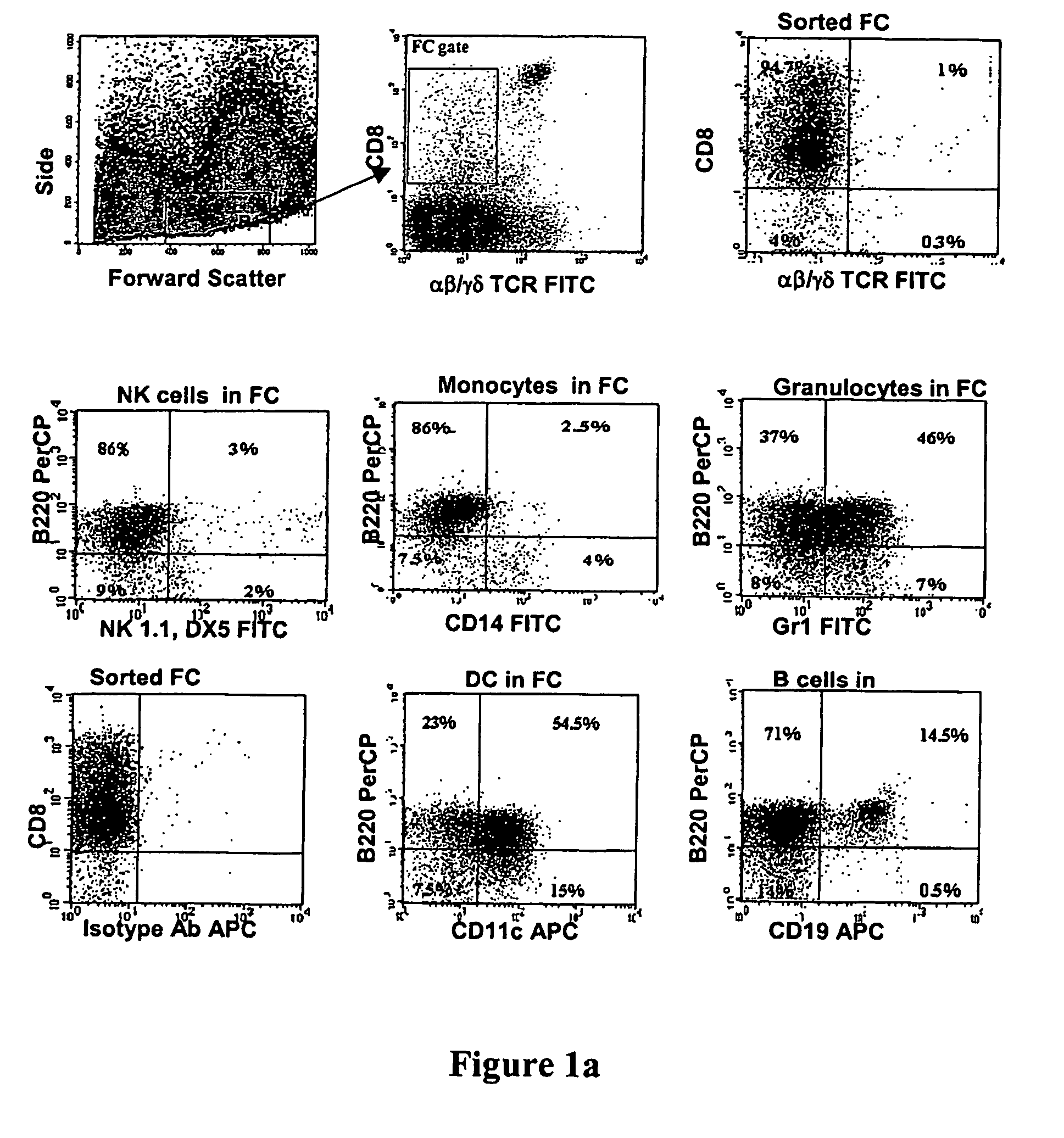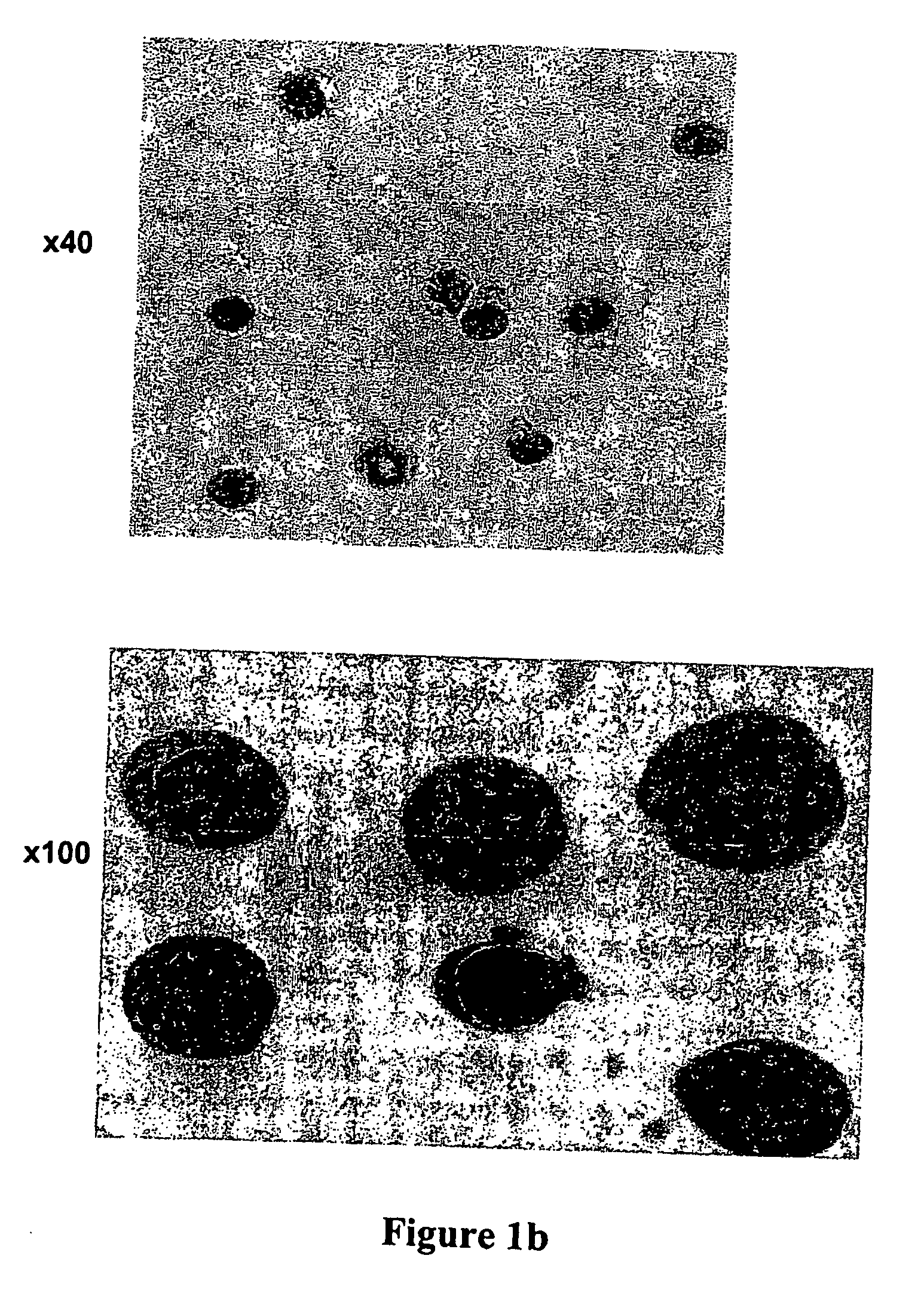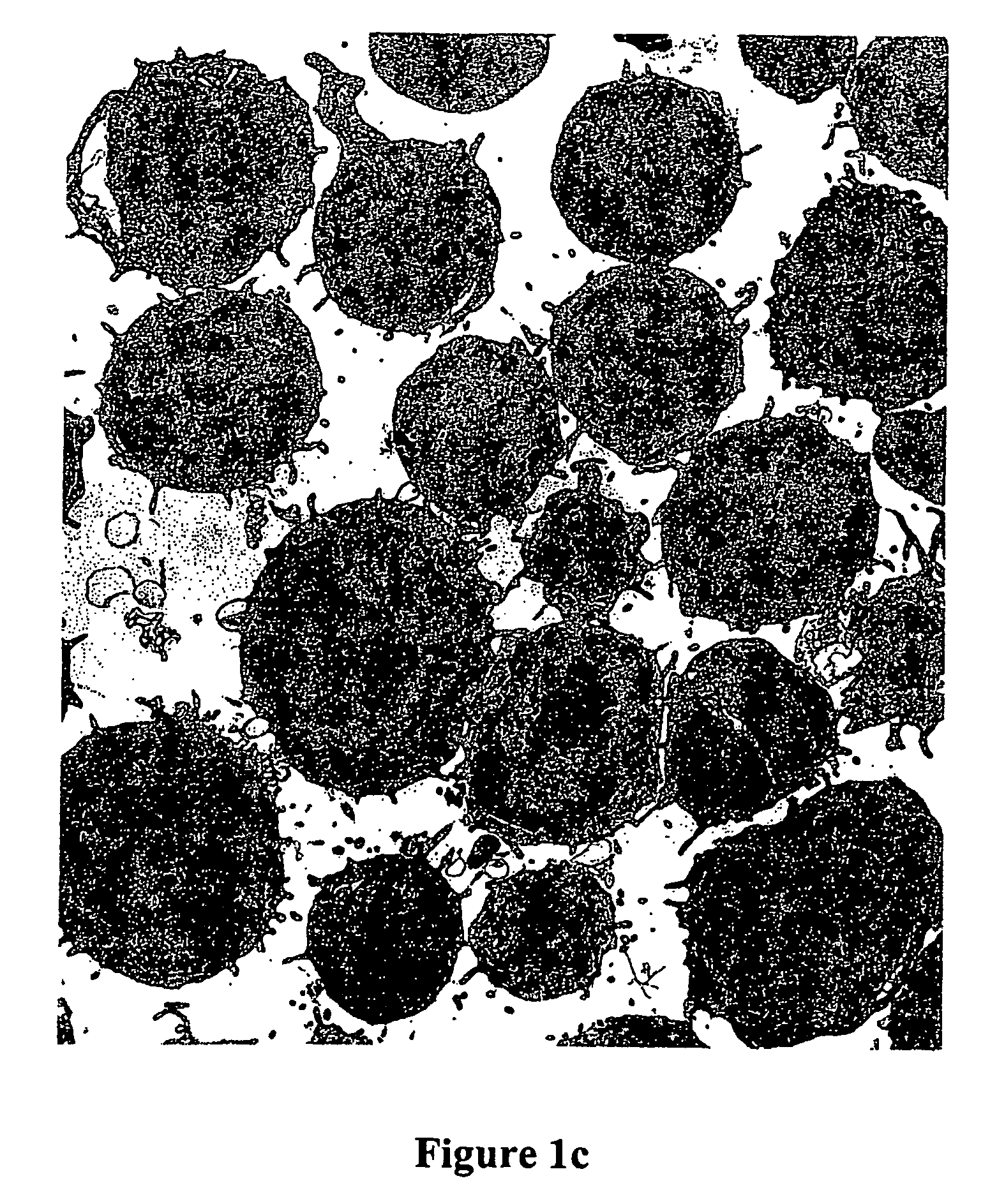Methods for enhancing engraftment of purified hematopoietic stem cells in allogenic recipients
a technology of purified hematopoietic stem cells and allogenic recipients, which is applied in the field of cell-based therapeutic strategies, can solve the problems of less efficient hsc engraftment of predc, and achieve optimal hsc engraftment, facilitate hsc engraftment, and facilitate hsc engraftment. efficient
- Summary
- Abstract
- Description
- Claims
- Application Information
AI Technical Summary
Benefits of technology
Problems solved by technology
Method used
Image
Examples
example 1
CD11c+ Cells are the Predominant Cell Type within the FC Population
[0092] To better characterize FC, markers expressed on the sorted CD8α+ / TCR− FC population were analyzed by FACS analysis. Approximately 65-70% of FC express CD11c+ (FIG. 1a), and 75-88% of FC express B220 (FIG. 1a). Among the subpopulations negative for B220 expression, approximately 4-6% were NK (NK1.1+ and DX5+), 6-7% were granulocytes (Gr1+) and 2-4% were monocytes (CD14+) (FIG. 1a). Among the B220+ subpopulation, only 15% were B cells (CD19+) (FIG. 1a), and 65% were DC (CD11c+). The CD19+B220+FC subpopulation was also positive for intra-cytoplasmic IgM (data not shown), confirming a B cell phenotype. Taken together, these data demonstrate that there are distinct subpopulations within the sorted FC that include a minority as NK, granulocytes, monocytes, B cells and a majority as DC. In addition, the sorted FC exhibited a variety of morphologies representing different cell types on cytospins with Wright-Giemsa st...
example 2
95% of CD11c+ FC Resemble Plasmacytoid Precursor DCs (p-preDCs)
[0093] Because CD11c+ DC represent the largest subset in the FC (up to 70%), the known subtypes of DC present in the sorted FC population were analyzed by FACS analysis (FIG. 2a). Strikingly, p-preDC (CD11cdim / B220+ / CD11b−) comprised 93-95% of the CD11c+FC subpopulation (FIG. 2a). To confirm that the predominant CD11c+FC subpopulation was related phenotypically to p-preDC, the presence of the CD4 marker on sorted FC was analyzed, at least 70% of bone marrow p-preDC has been shown to express the CD4 antigen26. Approximately 40-50% of FC expressed CD4 (FIG. 2.b) and this CD4+ FC subpopulation was almost exclusively of plasmacytoid phenotype (CD11c+B220+). Further, the majority of cells in the sorted FC population not only presented a p-preDC cell surface phenotype, but also exhibited a morphology similar to p-preDC. The majority of FC exhibited a characteristic plasmacytoid morphology, with a round shape, a smooth surface...
example 3
FC Behave Similarly to p-preDC after CpG ODN Stimulation
[0094] Given that IFN-α, TNFα and inflammatory cytokine production are main features of p-preDC, the present inventor examined whether FC resemble p-preDC in response to stimulation with CpG ODN. FC produced IFN-α after CpG ODN stimulation at levels similar to those produced by p-preDC (FIG. 3a). Additionally, as is the case for pre-DC, FC did not produce significant levels of IFN-α after LPS stimulation (data not shown). In addition to IFN-αsecretion, FC responded to CpG ODN stimulation by producing large amounts of TNF-α (FIG. 3b), and other pro-inflamatory cytokines including high amounts of Mip1-αCCL3, moderate amounts of IL-6 and RANTES / CCL5, and low levels of IL-12p70 (FIG. 3c). FC produced low amounts of IL9, IL-10, IFN-γ, and MCP-1 / CCL2 (FIG. 3c) and no GM-CSF, IL-1β, IL-2, IL-4, IL-5 or IL-13 (data not shown) either after culture with medium or CpG stimulation. In total, these data demonstrate that FC respond to CpG O...
PUM
| Property | Measurement | Unit |
|---|---|---|
| concentration | aaaaa | aaaaa |
| volume | aaaaa | aaaaa |
| volume | aaaaa | aaaaa |
Abstract
Description
Claims
Application Information
 Login to View More
Login to View More - R&D
- Intellectual Property
- Life Sciences
- Materials
- Tech Scout
- Unparalleled Data Quality
- Higher Quality Content
- 60% Fewer Hallucinations
Browse by: Latest US Patents, China's latest patents, Technical Efficacy Thesaurus, Application Domain, Technology Topic, Popular Technical Reports.
© 2025 PatSnap. All rights reserved.Legal|Privacy policy|Modern Slavery Act Transparency Statement|Sitemap|About US| Contact US: help@patsnap.com



